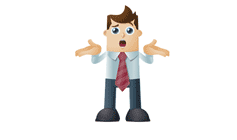Should you discover black mold in your bathroom, it is essential to tackle it right away to prevent it from spreading throughout your house. Keep reading to explore how to deal with black mold in bathrooms.
Any black mold formation in bathrooms must be removed as soon as possible. If left alone, black mold can be dangerous to you and your loved ones. Remove it on your own with readily available chemicals or have a professional inspect and remove it as soon as you notice it.
What we cover
ToggleIs Black Bathroom Mold Dangerous?
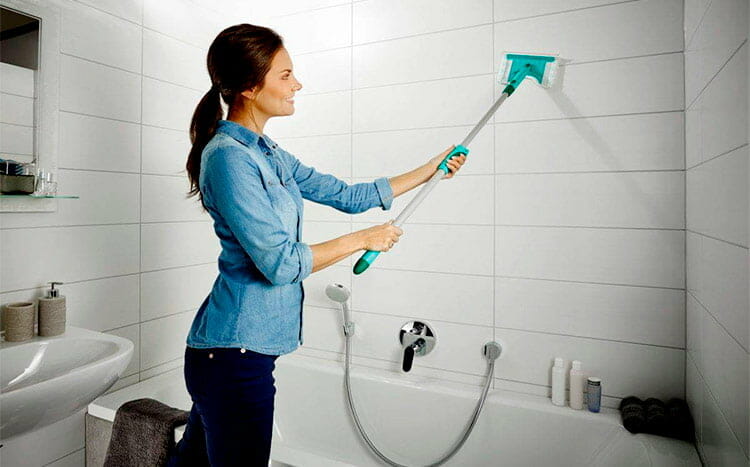
Any health professional would tell you that having black mold in your bathroom even for a short period is potentially dangerous. Research has shown that prolonged exposure to toxic varieties of black mold in living environments can trigger or exacerbate lung-related health conditions such as asthma. It may also affect household pets.
Here are some of the possible dangers of being exposed to toxic black mold for long periods in your bathroom:
- Mold poisoning- mycotoxicosis
- Allergies and asthma
- Bronchitis
- Respiratory infections-
- Chronic coughing and sneezing
- Lung cancers, etc.
There is evidence that exposure to toxic black mold(Stachybotrys chartarum) can cause immediate reactions in humans. You will most likely experience symptoms such as sneezing, headaches, and skin rashes if you are exposed. Children, people with existing lung conditions, and older people are more likely to have worse reactions.
The best cause of action if you have been exposed to black mold is to seek advice from your doctor. At the same time, you should also see to it that the mold has been removed.
How to Remove Black Mold from Bathroom & Shower
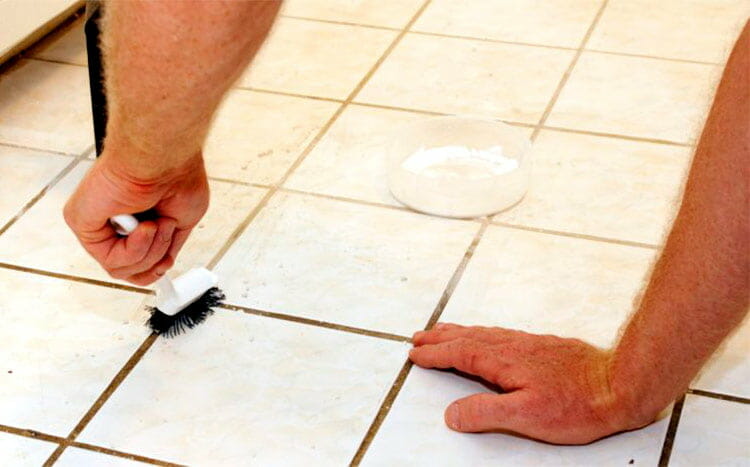
Removing black mold and preventing further growth requires careful planning and proper cleaning. Generally, it is recommended that you have a professional do an inspection and remove it safely. They could also do other tests to see if the mold had spread to other areas of your home such as attics and basements.
That said, you can still remove small patches of black mold by following these steps:
Requirements
You need the following items while removing the mold:
- Gloves-
- Face mask or respirator.
- Goggles
- Disposable coveralls
- Garbage bag
- Mold removal reagents/chemicals
Step 1- Identifying and Isolating Affected Areas
The first thing you should do is to identify the affected surfaces in your bathroom and shower. Sometimes small patches in exposed surfaces such as shower curtains could be a sign of a bigger problem. Black mold tends to thrive in dark, damp, and hidden areas.
Inspect the following areas and note areas that have the mold to be cleaned as a priority:
- Shower screen or shower curtain
- Behind sinks and toilet seats
- Shower surfaces
- Bathroom doors
- Window surfaces
- Hidden surfaces
- Inside the shower ceiling
- The external wall directly behind the shower.
- Shower fixtures such as lights
You should ideally have the entire washroom or shower thoroughly inspected and cleaned to ensure that all the mold has been removed. Use a flashlight or infrared light to identify mold particles in dark or hidden areas.
Step 2: Preparation
After identifying the areas affected by the mold, the next step is to prepare for cleaning up.
- Start by sealing off the bathroom so that airborne mold particles do not float to other areas such as corridors. You can use duct tape or heavy plastic or any material of your choice to ensure that there is an airtight seal on doorways, ventilation, and windows.
- Removable items such as shower curtains, carpets, and towels should be bagged and cleaned separately using hot water and normal cleaning products or replaced.
- Keep the external windows or ventilation open and if possible, have an exhaust fan or vacuum to suck off all the mold away from the bathroom as you clean.
- Wear your protective equipment (mask, gloves, and goggles) before you start removing the mold so that you do not inhale disturbed mold particles. Black mold spores tend to break off and become airborne at the slightest touch.
- Prepare your mold cleaning chemicals and reagents. You can purchase off-the-shelf mold removal products and mold bombs if you have a mild mold problem.
Here are some of the reagents and chemicals you can use to clean off mold from your bathroom:
- Concentrated bleach
- Dissolved baking soda mixed with white vinegar. Mixing baking soda with white vinegar and water may be more effective in some cases.
- Borax
- Ammonia- effective at removing mold from tiles and glass in your bathroom. Mix it with water and spray it with a spray bottle.
- Laundry detergents
- Hydrogen peroxide
- Mold removal compounds- there are a variety of special-purpose mold removal compounds you can purchase. Make sure the one you purchase is rated for black mold removal.
Step 3 Removing the Mold
After mixing your cleaning reagents, it is now time to start removing the black mold from your bathroom. Depending on the surface you will be cleaning, you will need to use the appropriate cleaning tool to remove the mold. For instance, use a scrubbing brush and sponge to remove mold from tiles and wall surfaces.
- Start by applying the cleaning chemical or compound of your choice on the surface with mold. You can also use a spray bottle or spray can for vertical surfaces and hard-to-reach areas.
- Scrub off the mold carefully using a brush making sure you cover every inch.
- Rinse off the area with a rough cloth and hot water to make sure all mold spores have been eliminated.
- For some chemicals such as borax and vinegar, you may need to saturate the area and wait until the mold has been killed by the chemical before you brush and rinse the area.
- Ensure that the entire bathroom or shower has been cleaned off and that all the identified mold has been eliminated.
- Dispose of the cleaned mold particles in an airtight garbage bag clearly labeled that it contains toxic substances. Alternatively, you can discard the mold by flushing it down the toilet.
- Clean your PPEs and make sure all mold particles have been removed.
- Some items such as shower curtains and carpets affected by black mold are better replaced with new items after the cleanup as it can be difficult to eliminate tiny black mold particles from porous materials such as cotton.
Step 4: Post-Removal Inspection
It’s not enough to remove black mold and start using the bathroom immediately. Black mold tends to spread quite quickly meaning any remnants could be a problem in the future. It is best to do a thorough inspection after the cleanup and test surfaces for traces of black mold particles. Professional inspectors use a series of tests to check that mold has been properly removed.
As part of the post-inspection, you should check that the root causes of black mold are identified and fixed. For instance, check that there are no leaking pipes and that there is proper ventilation. This will prevent further mold formation in your bathroom and other areas.
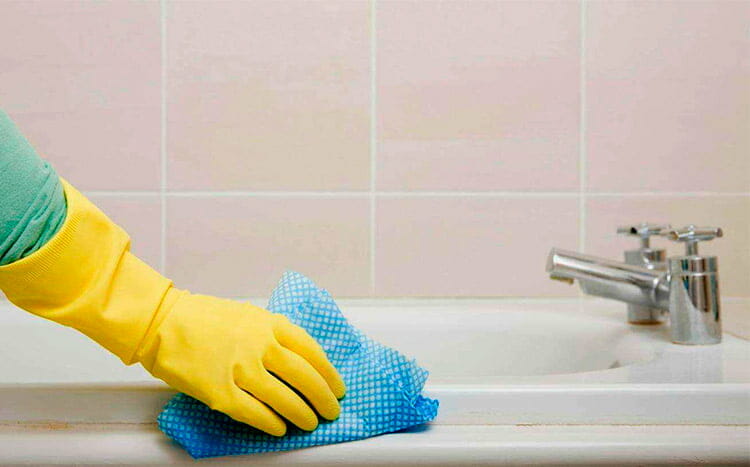
How to Remove Black Mold from Shower Silicon/ Caulk
Black mold tends to form on shower silicon or caulk because of dampness. You can remove it easily using bleach, vinegar, or any other removal agent you have with you.
Use a piece of cotton or rolled-up tissue paper to cover the mold after applying the bleach or chemical and wait for at least a day or two to remove the cotton or tissue together with the mold. Alternatively, you can remove the mold immediately using borax or hydrogen peroxide and a soft scrubbing brush.
How to Remove Black Mold from Grout
Grout is a non-porous surface so it’s easy to remove mold with normal cleaning agents or a mixture of vinegar and baking soda. Put the mixture in a spray bottle and spray the affected area. Give it a few hours and then repeat the process this time brushing off the mold or wiping the area. Make sure you address the root cause of the problem even after removing the mold to prevent further occurrence.
Will Cleaning Bathroom Mold Prevent Its Return?
Cleaning the bathroom or shower will not prevent mold from reoccurring. You must inspect your bathroom after the cleaning to find out why the mold occurred in the first place.
Addressing the root causes after cleaning existing mold will prevent it from returning in the future. For instance, always ensure that shower curtains and towels are dry before returning them to the bathroom area. Also, fix leaking roofs, and broken pipes and ensure the ventilation in your bathroom is working properly.
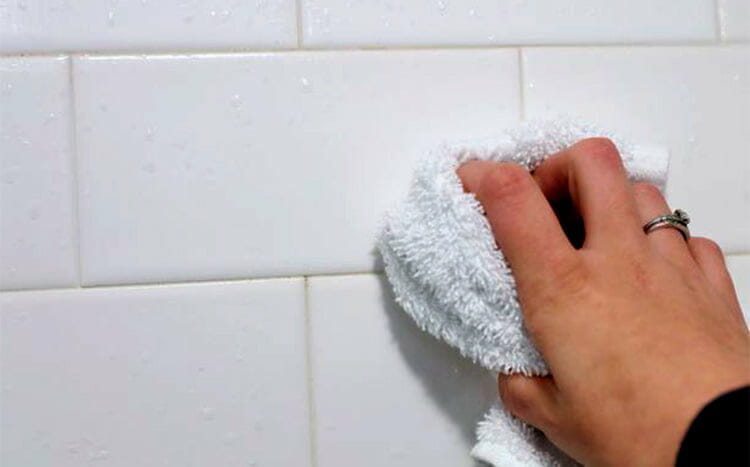
Do I Need A Professional for Shower Mold?
It’s always safer to have a professional inspect and remove black mold in your home for your safety. Black mold can be dangerous to humans and cleaning it on your own could expose you especially if you have pre-existing health conditions such as asthma or lung disease.
Professionals have the knowledge and tools to inspect and remove bathroom mold safely. HomeGardenGuides.com is a free service that quickly matches you with top-voted local mold removal specialists.
Here is what you need to do now to get 3 estimates by real certified experts in your area:
- Scroll to the top of the page and enter your Zip code.
- Answer questions about your mold job
- Your bathroom mold details are forwarded to three local experts. They will send you a price estimate for the job and some friendly advice.
IMPORTANT: There is no obligation to hire. This is a free tool and service to be used at your pleasure.
How Much Does Bathroom Mold Removal Cost?
Professionals charge between $25 to $15 to remove mold in bathrooms and other mold-prone areas. The amount you will spend to remove mold in your bathrooms depends on its size, type of mold, and other factors. Rates per square foot range between $10 to $25 again depending on specific conditions in the affected areas.
Why Do I Have Mold in The Shower?
Mold tends to form in bathrooms with the following issues:
- Dampness and excess moisture
- Broken pipes or drainage systems
- Leaking roofs
- Poor ventilation
- No heating
- Damp shower curtains and towels, etc.
This is why a post-removal inspection is crucial to prevent future mold occurrences in your bathrooms and shower areas. Also, make it a habit to inspect all the surfaces in your bathroom for mold even after addressing the issues above. Aside from visual inspection, you can tell if you have a mold problem if there is a strong unexplained odor in there, or if you keep sneezing after a visit.
Is Shower Mold Dangerous?
Shower mold can be dangerous if inhaled for long periods. As mentioned in the beginning, prolonged exposure to toxic shower mold (Stachybotrys chartarum) can trigger serious health conditions and make symptoms worse for those with existing conditions. Aside from that, shower mold makes your bathroom look dirty and untidy and may stain other items such as towels and shower curtains.
The presence of shower mold could also be a sign that you have a bigger problem that needs to be fixed such as a broken water pipe, leaking roof, or blocked ventilation system. For your safety, you should see shower mold as a bad sign and find a way to deal with it at the earliest opportunity. It does not take much effort or money to eliminate shower mold so there is no reason to ignore it.
Can You Get Sick from Bathroom Mold?
Black mold can cause health symptoms that are nonspecific and should be removed according to the CDC. Have a professional do a chemical test to find out whether you have been exposed to black bathroom mold and need medical attention.
All in all, black bathroom or shower mold is dangerous and should be removed whenever it is discovered. Small amounts of black mold can be removed using readily available chemicals but large mold formations must be inspected and removed professionally.



